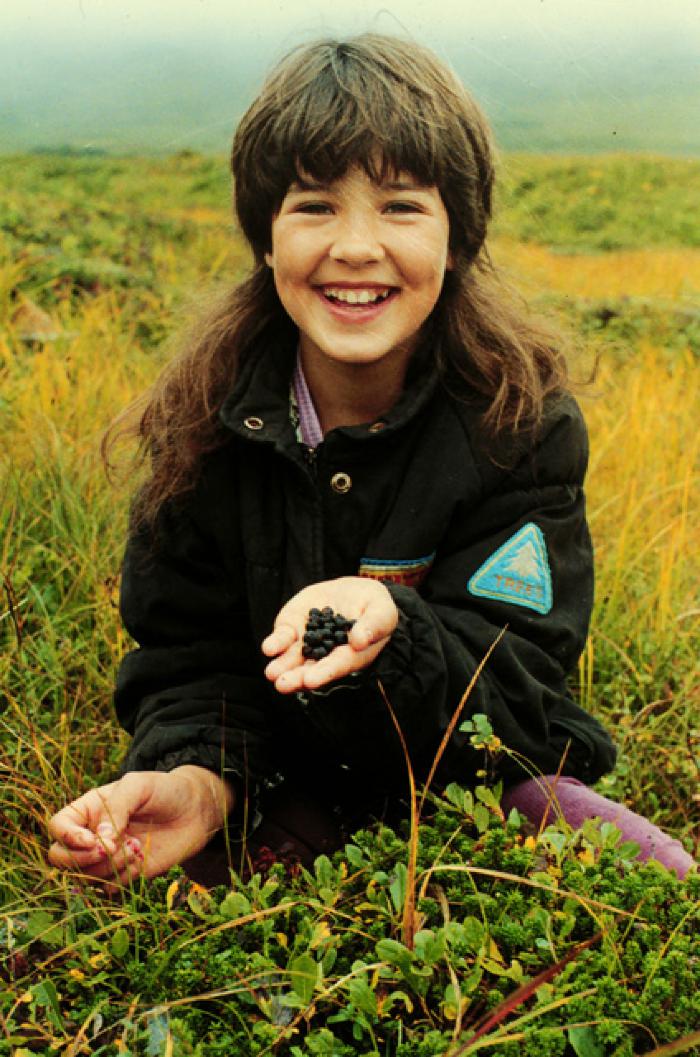Girl — Arya’aq

The life of an Alutiiq girl began in a small hut. Here, her mother labored with the help of a midwife and then rested with her baby for five to ten days before introducing the infant to the household. During this seclusion, the baby might have a hole pierced below her lip to hold a labret. As an infant, a baby girl would be carried on a cradleboard and carefully tended to, never allowed to cry for lengthy periods.
By age six, girls helped with simple chores, like making thread from sinew and braiding lines. To learn adult skills, they played with replicas of their mother’s tools: tiny stone lamps, wooden water scoops, bentwood cooking boxes, and dolls. Carved from wood and clothed, a girl’s dolls were thought to represent the souls of ancestors waiting to be reborn when the girl became a mother. Girls learned about spiritual life by participating in festivals, dancing with adult women in performances that honored ancestors.
At her first menstruation, a girl passed from childhood into adult life. As at birth, she was secluded in a special hut. This isolation lasted up to several weeks, marking her new ability to bear children and to produce spiritually powerful blood. Following seclusion, a young woman took a cleansing steam bath and had her chin tattooed to publicly display her new social status. Sometimes a festival was held to celebrate her initiation. Menstrual seclusions continued in the Kodiak region well into the twentieth century. Elder women recall being secluded in their bedrooms and forbidden to look out a window for fear they would invite bad weather.
